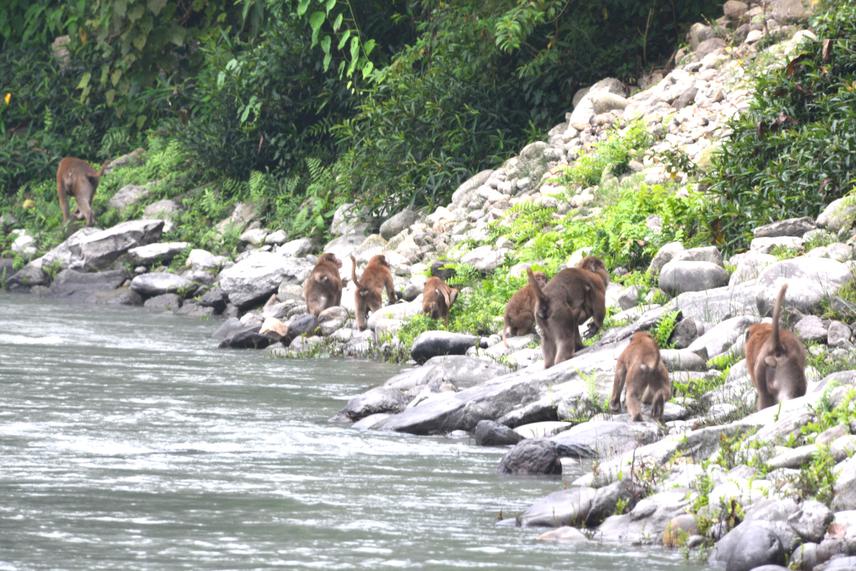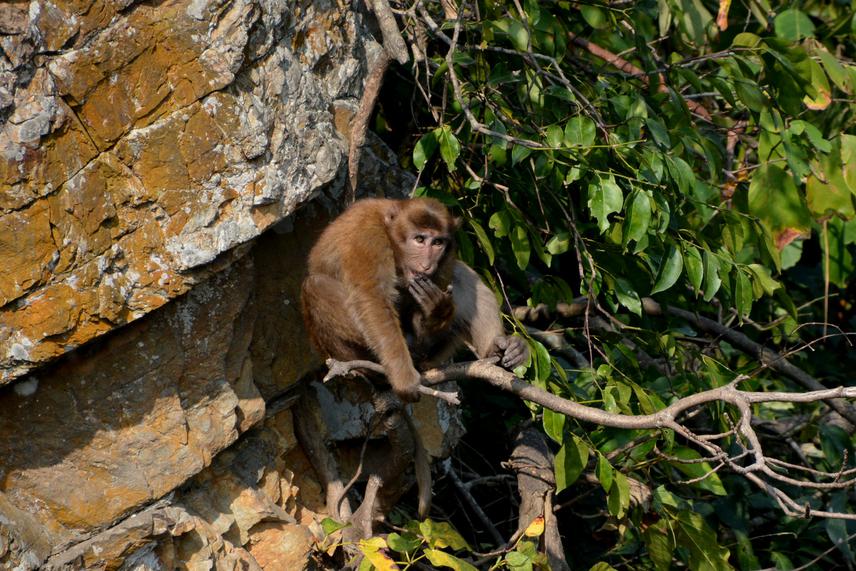Laxman Khanal
Other projects
28 Oct 2019
Exploration and Conservation of Newly Reported Endangered Assam Macaque Population in Far-Western Nepal
19 Apr 2023
Blending Fine-Scale Exploration, Socioecology and Conservation Genetics to Conserve Enigmatic Assam Macaques in Nepal
Identification of conservation status of Assam macaques and their sustainable conservation by peoples’ participation

A troop of Assam macaque on the bank of Budhi Gandaki River
Assamese macaque (Macaca assamensis) is the protected primate distributed in fragmented patches in the mid hills of Nepal. It is facing survival threats due to habitat alteration and loss, and conflicts with local people. The less studied ‘Nepal population’ of Assamese macaque has been considered distinct and likely endemic to Nepal by Conservation Assessment and Management Plan (CAMP, 2003) of South Asian Primates.

Foraging
Budhigandaki Hydroelectric Project (BGHEP), a dam based high priority project of Government of Nepal inundates the habitat of Assamese macaque in some villages of Gorkha and Dhading districts. When the habitat is degraded and migratory route is cut off, the isolated troops Assamese macaque may suffer from inbreeding problem and may also become the pest for farmers reducing the survival chances for remaining population. This research project aims to:
Identify the population status and distribution of the Assamese macaque in the catchment area of BGHEP and examine the potential habitats beyond their present occurrence.
Identify the possible corridors for linking the local population preventing them from extirpation.
Explore the present level of conflict between Assam macaque and local people and predict the possible conflicts in the future.
Initiate the community based programs for the sustainable conservation of Assam macaque in the project areas.
The present population status and distribution of Assamese macaque in the catchment area of BGHEP will be censused and such statistical data will be important in its long-term management. The potential habitats and corridors linking them will be explored and the habitat management will be done with the active participation of the local people.
The causes of conflicts between human and Assamese macaques in catchments of BGHEP will be identified and mitigating measures will be taken. Mass education by training on wildlife conservation and environmental awareness will be achieved. Communities will be made aware about the need of conservation of the macaque, alternative methods of farming and guarding the crops to reduce the conflict with macaque, improvements in livelihood etc. Community based sustainable conservation practices will be implemented by establishing the local conservation groups.